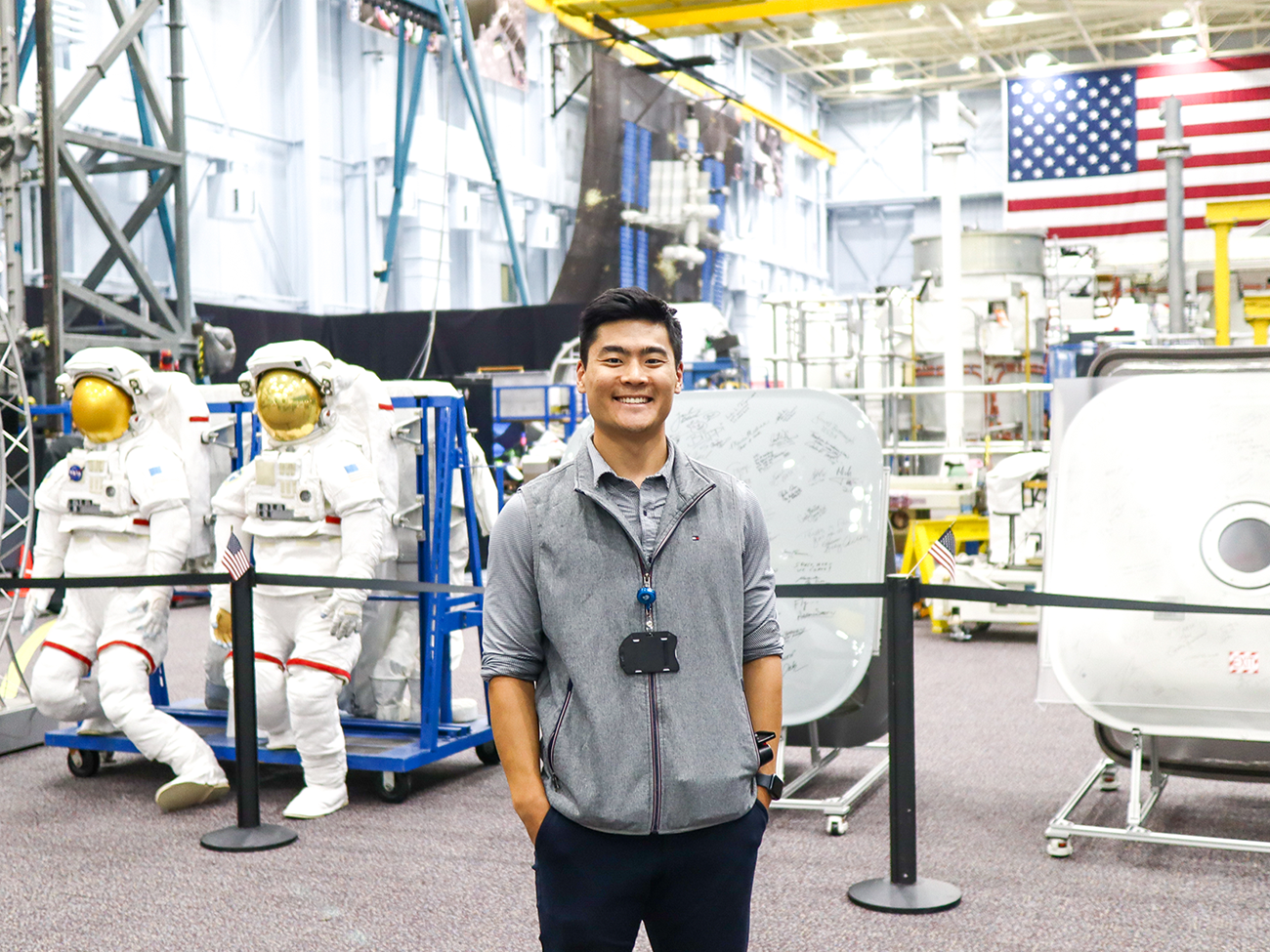Medical student has his eyes on the stars
As a child growing up in Iowa, Alex Suh, a fourth-year medical student at Tulane, loved looking up at the stars. He dreamed of one day working for NASA, and thanks to his time at Tulane, he has been able to fulfill that dream.
Suh, who also received his undergraduate degree in biology from Tulane, first interned at NASA’s Johnson Space Center in summer 2022 and returned in fall 2024 as part of NASA’s Aerospace Medicine Clerkship, a program that involves a research project as well as lectures in aerospace medicine.
With a chosen medical specialty in ophthalmology, he’s centered his research project around the eyes — “the coolest organ in the body,” he said.
Through both the internship and the clerkship, he has been studying spaceflight-associated neuro-ocular syndrome, or SANS, a condition that affects about 70% of astronauts. SANS is a combination of symptoms caused by structural shifts in the eyes and brain during long-duration spaceflight. It is likely caused by an increase in fluid to the head during weightlessness, when the body no longer needs to fight against gravity to get blood and cerebrospinal fluid to the head.
“Essentially, the eyeball gets shorter and there’s a lot of swelling in the back of the eye,” said Suh. SANS doesn’t always cause vision problems in astronauts, but the risks are higher on lengthier missions.
Although astronauts tend to be in space for six months at a time now, that will change as NASA sets its sights on a trip to Mars, which would take upward of two years. “If an astronaut goes blind in two years, that’s a mission failure,” said Suh, “so NASA is being proactive with the research right now to make sure that something like that doesn’t occur.”
SANS stops being an issue once the astronauts are back on Earth, but NASA is currently researching ways to combat it while still in space.
“What’s going to happen if we go to the moon, which is one-sixth of Earth’s gravity? Is that enough to counteract [SANS]?” said Suh. “I asked the current subject matter expert [at NASA] that question, and he said, ‘We don’t know until we get there.’”
The International Space Station has instruments that can capture high-resolution photos of the backs of the astronauts’ eyes, which enable them to study changes as they are happening, regardless of whether the astronauts themselves notice any symptoms.
“The sample size of astronauts is very, very small. Very few people fly,” said Suh. His research focused on terrestrial data, or data taken from test subjects on Earth. To simulate the conditions that cause SANS, researchers use something called “head down tilted bedrest,” where a person lays on a bed tilted at a six-degree angle so their head is below their feet. Test subjects remain in that position for weeks or even months. The angle causes fluid to move toward the head in a way that mimics how fluid shifts occur in the body in space.
During his time at NASA, Suh would look at images of the eyes of people who participated in these experiments, searching for signs that could point to SANS.
He also got the opportunity to be a test subject. He was attached to electrodes, spun around in a centrifuge and asked to do specific tasks, all in the pursuit of aeronautical research. “Being a test subject, being part of the experiments, I think that was one of the coolest parts of the internship,” said Suh.
He said his work studying SANS certainly affected his choice to go down the path of studying ophthalmology, citing his fascination at realizing how many other systems in the body interact with the eyes.
“My father is an ophthalmologist, as well, so he’s been my biggest inspiration,” said Suh. Although his father encouraged him to explore every specialty he could while in medical school, Suh was drawn to follow in his father’s footsteps.
After seven years at Tulane, Suh’s time in New Orleans could soon be ending. He is in his final year of medical school and will find out soon where he will go next for his residency, whether he will stay in New Orleans or move somewhere else.
“I’m really thankful for my time at Tulane,” said Suh. “I can’t imagine myself anywhere else.”

